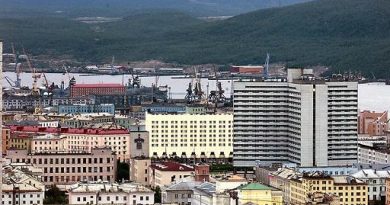Glacier melt from unchecked emissions could affect Finland’s sea levels post 2100

Under the worst case scenario, glacier and ice sheet melt could cause Helsinki’s sea levels to rise by more than half a metre after 2100, says research published in the journal Natural Hazards and Earth System Sciences.
In the study, researchers from the Finnish Meteorological Institute (FMI) and Finland’s Aalto University, offered new projections for the mean sea level rise in Finland over the next century.
“The greatest effects of sea level rise will only be felt after 2100,” the FMI said in a news release. “If we do not succeed in mitigating greenhouse gas emissions, sea level may rise by several metres over the following centuries. Such a great increase would have significant impacts in Finland as well.”
The authors say that land uplift, the amount land still rises each year as it rebounds from the last glacial period, currently protects Finland from rising sea levels.
But in future, the speed of sea level rise will eclipse the uplift as glaciers and ice sheets melt at increasing rates and the globe experiences the thermal expansion of sea water, the paper says.

“The new projections are based on extensive international research data and climate model results,” the FMI said.
“In addition to rising sea levels and land uplift, they have taken into account special characteristics of the Baltic Sea region, such as the effect of changes in the wind climate on water exchange between the Baltic Sea and the Atlantic Ocean in the Danish straits.”
- The National Land Survey of Finland describes land uplift in the Nordic countries and the Kola Peninsula in Russia as a phenomenon known since the 1400s
- The Quark area between Finland and Sweden experiences the highest land uplift at nearly 1cm a year
- The southeast corner of Finland experiences the lowest annual land uplift at less than 3mm
- land uplift is no longer observable in the St.Petersburg area
-Source: National Land Survey of Finland
The Bothian Bay coast, where land uplift is strong, is not expected to experience sea level rise this century, the research suggests.
“Sea level rise will increase flood risks on Finland’s southern coast in the coming decades,” the FMI said. “On the coast of the Bothnian Bay, the rate of land uplift is faster, but there too, the decline in sea level will slow down.”
Different models used
The researchers used different data and climate models, as well as things like wind changes, when working on their projections. They used three different emission scenarios for their calculations.
“If global emissions could be mitigated quickly, the sea level in Helsinki would rise by about 9 cm by the end of this century,” the FMI said. “The corresponding figure under the medium emission scenario would be 25 cm and under the high emission scenario 54 cm.”
Ice sheet uncertainty

The researchers said the rates of change in the Greenlandic and Antarctic ice sheets remain wildcards when it comes to sea level rise projections for Finland.
“The melting of Greenland would only have a minor effect on the sea level in Finland, as the change in the gravity field related to the melting of glaciers and ice sheets overrules the rise in the proximity of where it takes place,” the FMI said.
“The melting of Antarctica, on the other hand, would have a full effect in our region.”
Write to Eilís Quinn at eilis.quinn(at)cbc.ca
Related stories from around the North:
Canada: “Our climate is changing before our eyes,” says WMO upon release of new report, Eye on the Arctic
Greenland: Climate change accelerating ice loss from peripheral glaciers, Eye on the Arctic
Norway: Will the green transition be the new economic motor in the Arctic?, Eye on the Arctic
Sweden: Sweden’s climate policies closer to reaching goals, Radio Sweden
United States: Bering Sea ice at lowest extent in at least 5,500 years, study says, Alaska Public Media



